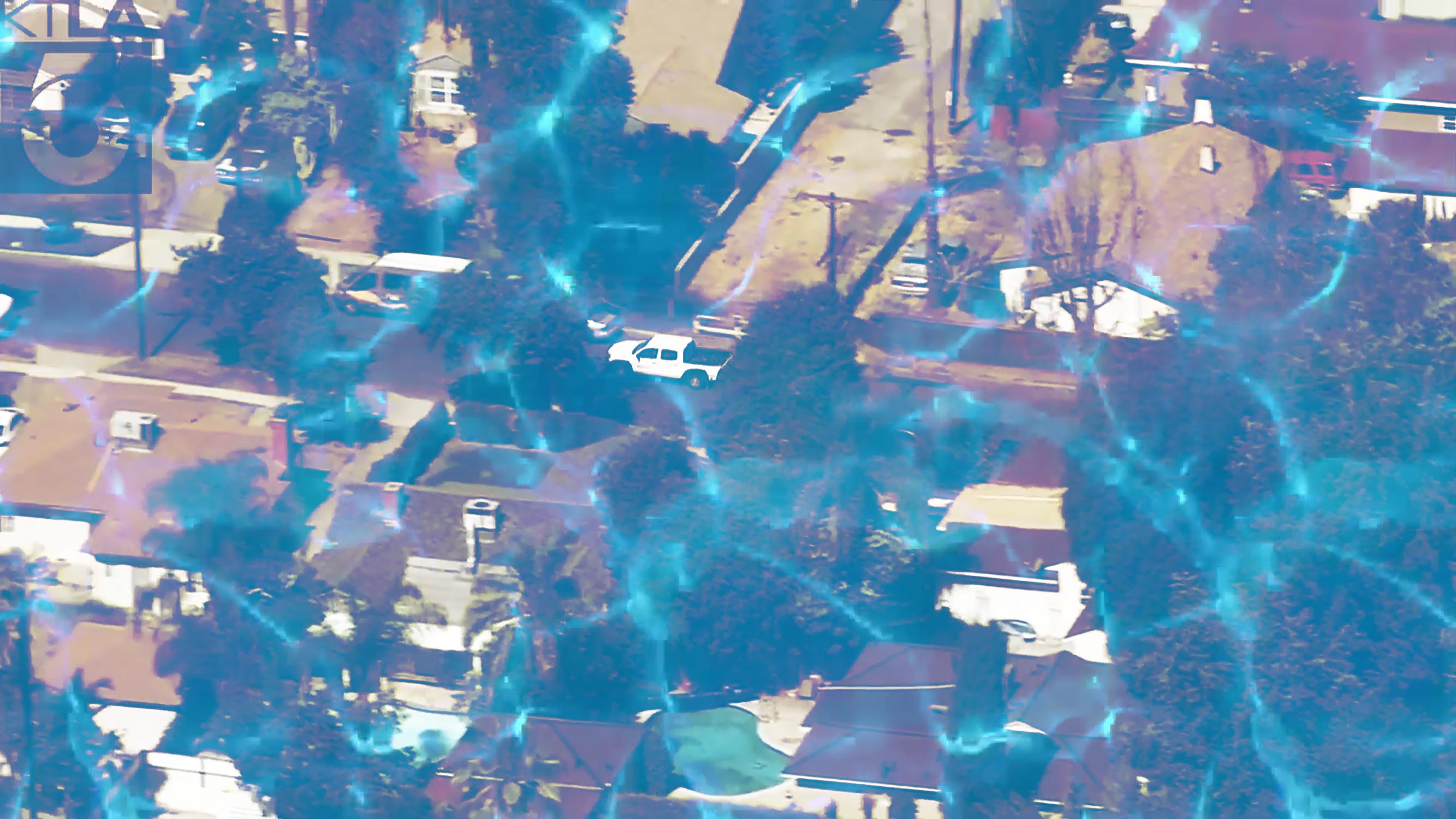
Down!
Series of five individual videos
2015/20
Our common understanding of spatial orientation in combination with time has changed drastically throughout the last few years. A major reason for these changes is the increased importance of the utilization of areal views and surveillance technology. We are confronted with satellite images and various map apps providing three dimensional rendered views on a daily basis which forced the viewers unconsciously to take the position of an onlooker. We have internalized the way of looking at the world in a God´s-eye view overtime and moved away from our profusely defined vision, the linear perspective. Slowly its singular focal point and the stable vision that comes with it got subsidized with divergent vanishing points, which produced a multitude of perspectives and therefore blurred and distorted our perception. As we are floating, in terms of God's eye vision, consequently the buildings and objects tend to merge into each other and overlap.
Hence, these new technologies changed drastically our way of navigating through the city and reading it. Instead of experiencing the urban landscape from a first-person view linearly, we can now examine it in a surface manner with Omni directionality.
Reyner Banham famously stated that to read the city of Los Angeles "in the original", one has to learn to drive. This might still be true to some extent, but it is also heavily based on a linear perspective perceived from the street view. Whereas in the 21st century, we are not anymore bound to read the city along its streets but rather can pan over it as we please, yet still have the opportunity to combine it with a street-view.
Hence, these new technologies changed drastically our way of navigating through the city and reading it. Instead of experiencing the urban landscape from a first-person view linearly, we can now examine it in a surface manner with Omni directionality.
Reyner Banham famously stated that to read the city of Los Angeles "in the original", one has to learn to drive. This might still be true to some extent, but it is also heavily based on a linear perspective perceived from the street view. Whereas in the 21st century, we are not anymore bound to read the city along its streets but rather can pan over it as we please, yet still have the opportunity to combine it with a street-view.
The omnidirectional navigation underlines the flattened hierarchy of the city. As nothing seems to be static, we lose senses of scale and significance. What used to be known as an “icon” of the city, gets swallowed by the repetition of the neighboring roofs. The change of perspective demineralizes our memory of vision.
While Banham had the conditions of a street as a perimeter to move along and direct his vision towards, our total freedom of navigation via the pan over view blurs our sense of focus. Thus the question becomes where to point our scope of vision if there is no more horizon or perspective tunnel to look into?
In the Video Series titled “Down!”, the chasing of the moving car by the helicopter narrates the way we encounter and perceive the city. The irrational and spontaneous movements of the car lead the observer to expand established patterns and come across new sequences of urban entities. Newly stitched together fragments of the city form an unencountered version of the city. Similar yet unprecedented, we see parking lots, roofs, pools and backyards. Due to the new vision, the urban entities get perceived in an equal hierarchy, spread throughout the surface, as the eye jumps from roof to pool and back. Erasing what's in between and flattening the placement of things within the city.
While Banham had the conditions of a street as a perimeter to move along and direct his vision towards, our total freedom of navigation via the pan over view blurs our sense of focus. Thus the question becomes where to point our scope of vision if there is no more horizon or perspective tunnel to look into?
In the Video Series titled “Down!”, the chasing of the moving car by the helicopter narrates the way we encounter and perceive the city. The irrational and spontaneous movements of the car lead the observer to expand established patterns and come across new sequences of urban entities. Newly stitched together fragments of the city form an unencountered version of the city. Similar yet unprecedented, we see parking lots, roofs, pools and backyards. Due to the new vision, the urban entities get perceived in an equal hierarchy, spread throughout the surface, as the eye jumps from roof to pool and back. Erasing what's in between and flattening the placement of things within the city.
IARC Show
organized by the Independent Architecture Reasearch Colloquia, University Innsbruck
March 2020
organized by the Independent Architecture Reasearch Colloquia, University Innsbruck
March 2020







